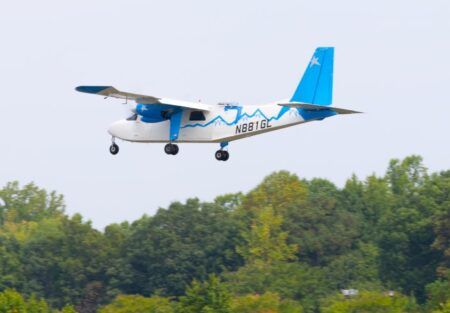The Perlan 2 glider, the world’s first engineless aircraft designed to reach the edge of space, achieved its successful first flight on Wed 23 September in a historic moment about 5,000ft above Roberts Field, the Redmond Municipal Airport in Oregon. This was the first test flight of the aircraft, which next year will attempt to set a new world altitude record for any airplane. Perlan 2 hopes to open up a world of new discoveries related to high-altitude flight, climate change and space exploration.
“Airbus Perlan Mission II is a historic endeavour in the truest spirit of aviation’s earliest pioneers,” said Tom Enders, Chief Executive Officer (CEO) of Airbus Group. “The knowledge gained from this project will impact how the world understands and addresses climate change. But it will also help Airbus continue to innovate ways to fly higher, faster and cleaner, on Earth and possibly beyond.”
The Perlan 2 glider was developed by The Perlan Project, a volunteer-run, non-profit endeavour supported by Airbus Group, as well as sponsors including Weather Extreme Ltd, United Technologies and BRS Aerospace.
“We’re extremely excited about the successful first flight of the Perlan 2 glider,”
said Ed Warnock, CEO of the Perlan Project. “This marks a major breakthrough in aviation innovation, one that will allow winged exploration of the atmosphere at the edge of space and lead to new discoveries to unravel some of the continuing mysteries of weather, climate change and ozone depletion.”
Jim Payne and Morgan Sandercock piloted the test flight, which was the first of many for the Airbus Perlan Mission II team as it prepares to soar the aircraft to the edge of space in Argentina in 2016.
The Perlan 2 is a pressurized sailplane designed to ride air currents that, in certain mountainous regions near the north and south poles, can reach into the stratosphere. Next year’s flights are expected to reach 90,000ft, exceeding even the altitudes achieved by the U-2 and the SR-71.
Despite having no engine, the glider’s true flight speed at that altitude will be more than 400mph and the air density will be less than two percent of what it is at sea level. The crew will breathe pure oxygen provided by a rebreather system, similar to what astronauts use in space.
In addition to its two-person crew, the aircraft carries scientific instruments to provide new insight into climate change and our upper atmosphere. Because it lacks an engine, Perlan 2 can explore the edge of space without polluting the atmosphere it will study, opening up human knowledge on several fronts, including: what happens at the highest levels of the stratosphere; improving climate models; taking untainted air samples to measure levels of ozone-damaging chemicals and assess whether the ozone layer is replenishing or still depleting; future aircraft design, as commercial aviation strives to operate aircraft at higher altitudes; and even how wing-borne aircraft could operate above the Martian surface.
September 24, 2015




